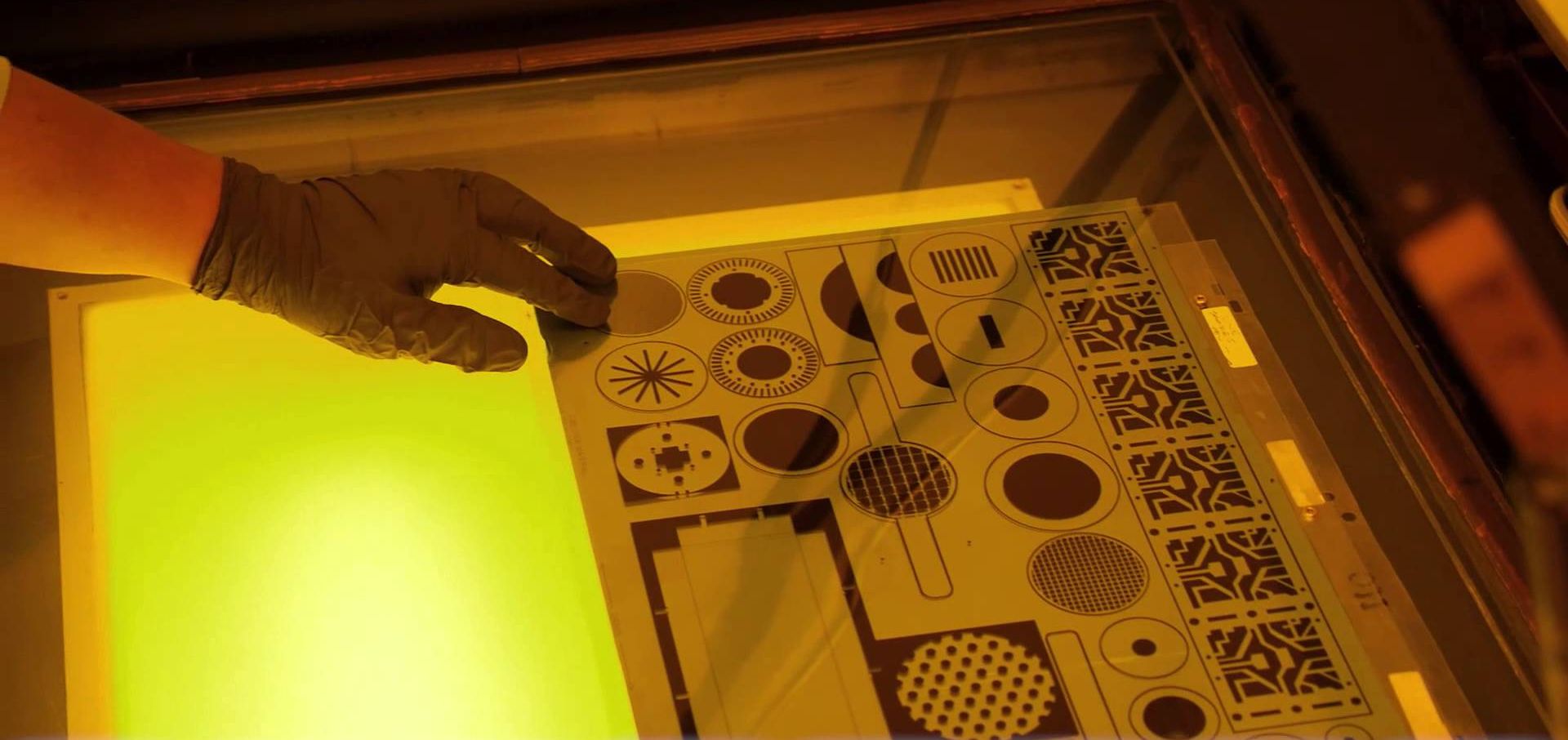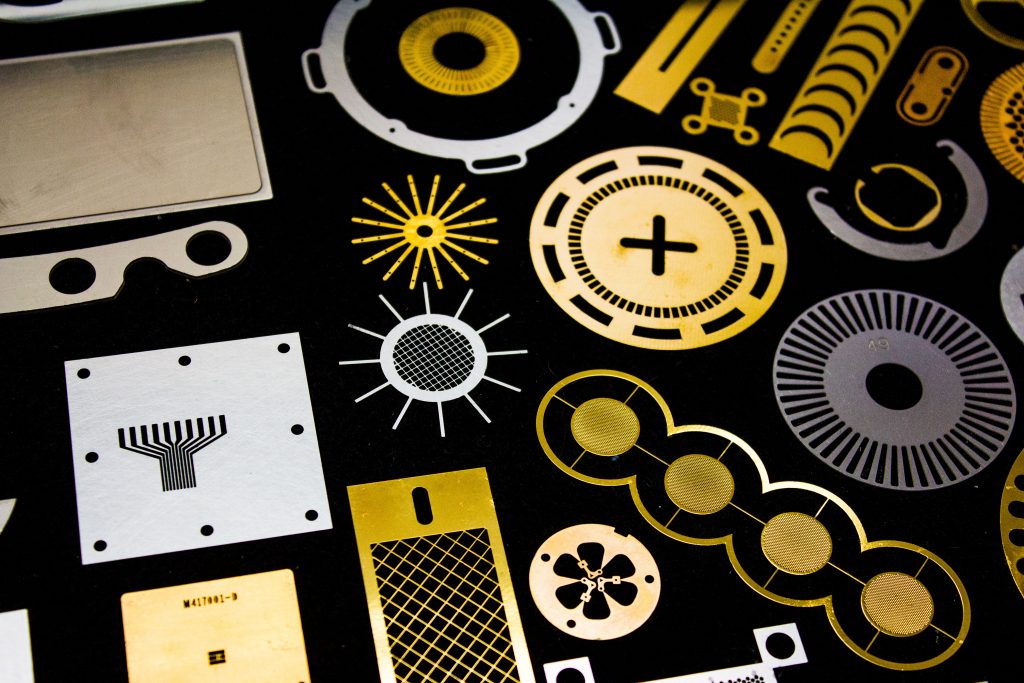Photo Etching takes over a considerable part of the refinement industry. Metal manufacturers constantly find themselves drawn towards the intricate photo etching options. Photo etching is still not widely known in many areas however the new few decades will incorporate this procedure in every industry.
Metal parts are constantly produced in large factories. Quality over quantity is often stepped aside in these factories and many substandard parts get mixed within the lot. You cannot do much once the metal parts are fully formed however photo etching might be your last hope.
Thus photo etching refines and smooths metal parts, these deformities do not usually show up on the naked eye. The manufacturing of small precision parts with the use of etchant chemistry was not something that our forefathers would have seen coming.

Although chemical etching goes way back in history, its application to the construction of micro parts is relatively new. The process receives admiration for its time reduction qualities and overall clear results.
The manufacturing industries are working at an unmatched pace therefore they need a process that performs just as efficiently. One second lost in inefficiency means a delay of many hours. Everything works through an intricate chain.
Photo etching suits all kinds of complex parts, you can apply the chemical etchant on every dimension of the surface with ease. Apart from these obvious benefits in photo etching, the application of various metals also attracts many consumers.
There is not one kind of metal existing in the world, similarly, photo etching is not constrained to one metal either. In the earlier days, steel was the most prevalent out of all the metals. In recent ages, many other metals have sprung out of the periodic table to form alloys that conveniently fit many manufacturing processes.
These metals have different chemical properties and structures. Some metals are easier to etch than others, this does not hinder the etching of the harder metals. At the end of the day, every metal can experience photo etching. Experienced companies can photo etch more than 2000 metals accurately.
Furthermore, the photo etching companies encourage metals that have lighter weight and simpler composition. They can etch to the customer's satisfaction however metals like titanium make the process much longer.
If you want your micro part to have a photo-etched surface, then why not save yourself all the time and money by using affordable and cheap metal. Metals like aluminum make the micro etching procedure a nightmare. The end result will not bring about the same levels of satisfaction compared to copper and steel.
Manufacturers prefer the photo etching system since it does not make an imprint or compression. The image prints itself on the surface of the metal. If the chemical etching procedure alters the chemical composition of the metal, the entire purpose of the etching gets defeated.
The procedure spans over some simple steps. The manufacturer determines the printing image and then prepares the metal surface. Once the metal surface coats with prepping material, you submerge in a tub of chemicals. The final result has flawless finishing.
Stainless steel is the most compatible metal for photo etching. Since stainless steel is a popular metal in manufacturing, you can perform photo etching in many ways. The methodology for chemical etching evolved over time and so did the chemicals.
The procedure is already efficient and does not consume time. Stainless steel micro parts are not only economical but also sturdy. Manufacturers usually photo etch the micro steel parts before releasing them into the market. Photo etching is also popular in customized orders such as meshes.
In fact, customized stainless steel parts receive larger orders for photo etching. Manufacturers want to emphasize the custom part. The mechanical surface takes a lot of time for the manufacturers to perfect. The chemical etching process can only do so much when the metal finish already has defaulted.
Therefore, the etching works best on smooth mechanical surfaces. Recently, surgical instruments have entered the market for photo etching. Stainless steel is the primary constituent of all surgical instruments. The Chemical etching process can make use of all kinds of steel moreover the hardness does not matter. Stamping usually leaves an imprint on thin steel sheets however etching does no such damage. The steel parts look good as new.
The manufacturing of surgical instruments takes a lot of time. The manufacturers invest a lot of time and resources to select high surgical-grade steel. Photo etching on surgical-grade material will only make it more refined and blur-free. The inclusion of photo etching on these instruments has become a given.
Stainless steel takes over the majority of chemical etching orders however copper and nickel are just as important. Nickel is an affordable and multi-purpose metal for coating softer metals. The nickel alloys already form a thin protective shield around surgical equipment and electronics.
The best performing nickel does not necessarily suit photo etching for instance the Inconel. Inconel has incredible resistance towards heat and corrosion. These factors make it quite hard for the experts to photo etch the surface but what is the fun in chemical supervision without a challenge.
Experts have discovered ways to alter the composition of the chemical bath and solutions which easily simmer away all the protective properties of certain metals like Inconel. Similar to nickel, copper alloys respond better to chemical etching instead of the pure form. Copper sheets are highly malleable and reactive.
The etching procedure simplifies as soon as the copper metal changes shape. Of course, harder metals like titanium pose a different challenge.
This shows that the basic principle around the etching procedure is similar however the variations only occur due to the chemical make-up of the metal. The variety of metals works best with more than one acid for example nitric acid, ferric chloride, and hydrochloric acid.
The combination of stainless steel and ferric chloride is the textbook application in chemical etching. Etching has many similarities with the artwork. Acid etching was commonly practiced in the middle ages whilst forging metal weaponry. You can choose the tone, strength, and covering base for etching.
Metal machining technologies do not go in and out of style. The chemical etching process is here to stay for many years to come. Even the most unimaginably complex metals have scope to have a chemically etched surface.
This was only possible because of the consistent research and development followed by the photo etching experts. The process is continually changing to include as many metals as possible. The etching is also possible in other materials such as glass. Stamping and laser jet cutting can give similar results however the method has a greater inclusion. Moreover, etching allows standardized changes in mass production, it suits large orders.

In simple terms, photochemical machining is similar to engraving and lithography. The process is only easy if you take care of the smaller specifications. The steps are not hard to follow however the smaller details can hugely impact the final result.
It would be best if the etching is left for the professionals since the chemicals can turn out toxic. Missing a step will end up costing you more than you invested. A wrong decision will take the method from being economical to costly. Thus, refrain from trying photo-etching at home when you can easily buy it off from the market.
For further information, regarding photo etching metals, Have a look at our website now.
